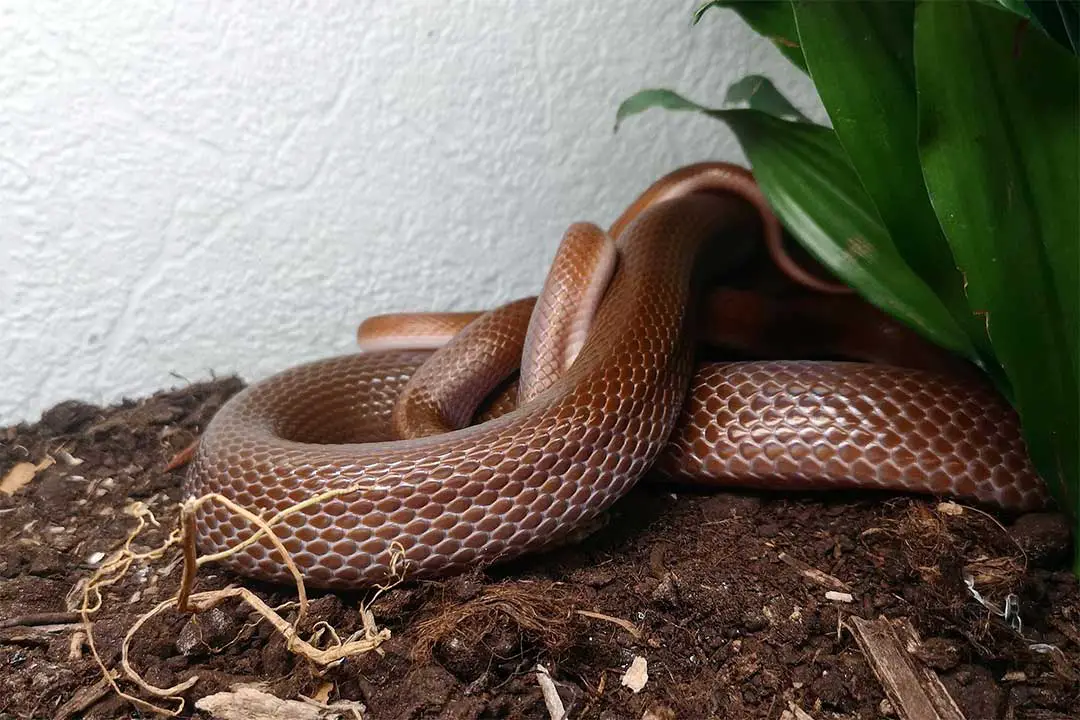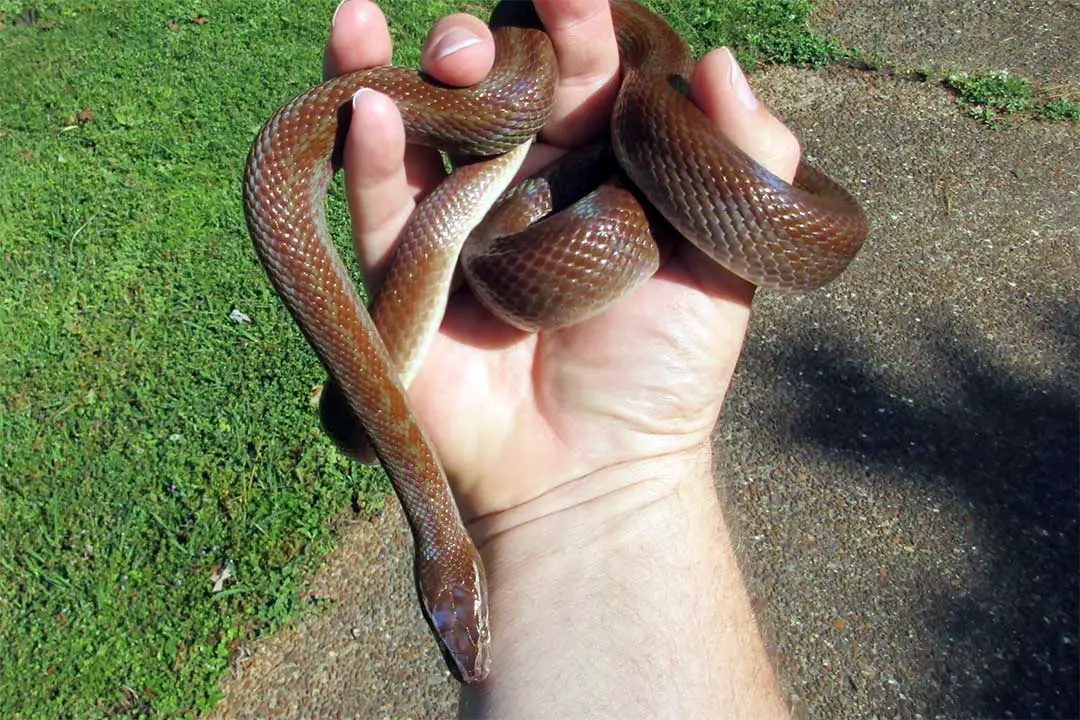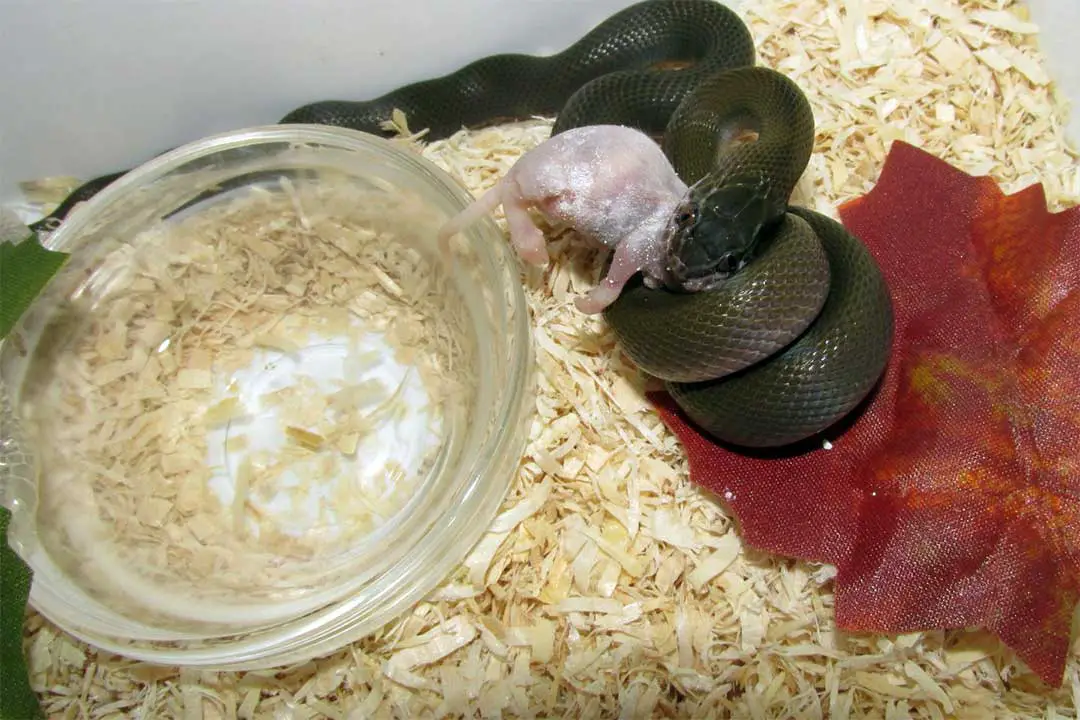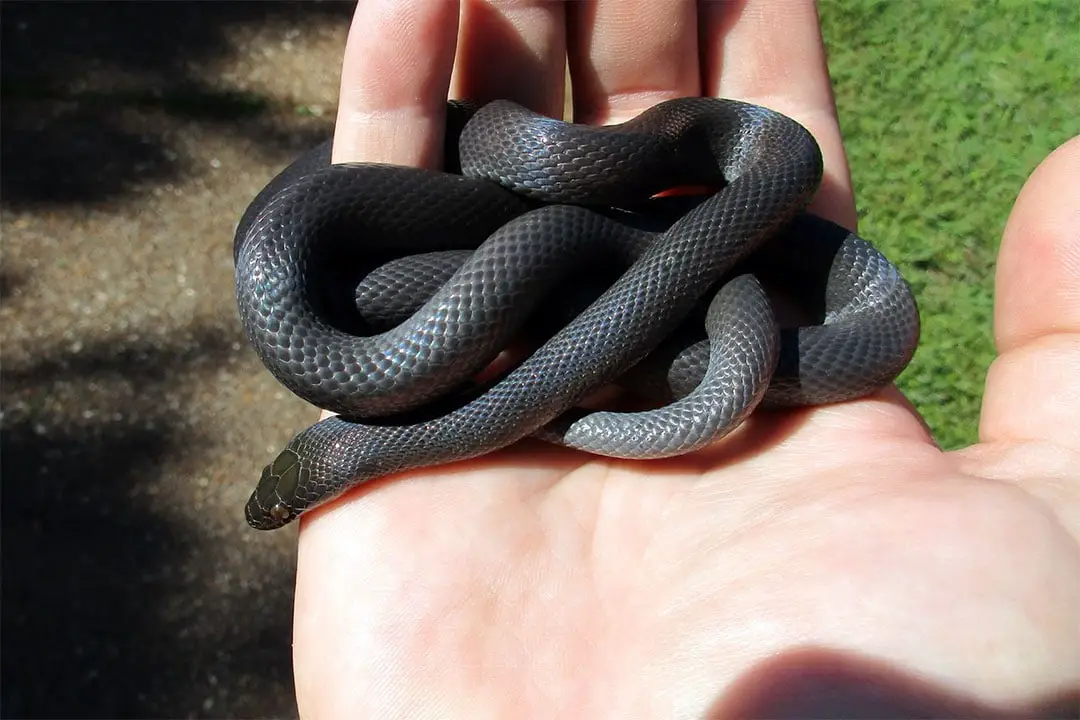If you are new to breeding snakes, the African house snake – Boaedon Fuliginosus is an ideal species to start with!
In this article, I will go over the steps to successfully breed a pair, incubate the eggs and take care of the hatchlings:
Step 1: Breeding Requirements
African house snakes can be bred quite easily at your home. However, the imported wild African house snakes would take some time to acclimate before breeding in captivity.
For the captive-bred snakes, breeding them won’t require much, all you will need is a male and female snake of age, and they will readily breed.
Once settled, you will need to wait until the female sheds off, then gently lower the male in the cage.
Brown house snakes typically take little time to get used to each other, and when they are of age, they will start copulating soon after you put them together.
House snakes are originally from Africa in the tropical and sub-tropical climates; they, therefore, don’t really need any cycling to stimulate their reproduction.
There is a record of these species breeding all year round, even in the wilderness. In captivity, well-fed adults usually reproduce after a couple of months, typically two.
Step 2:Sexing African House Snakes
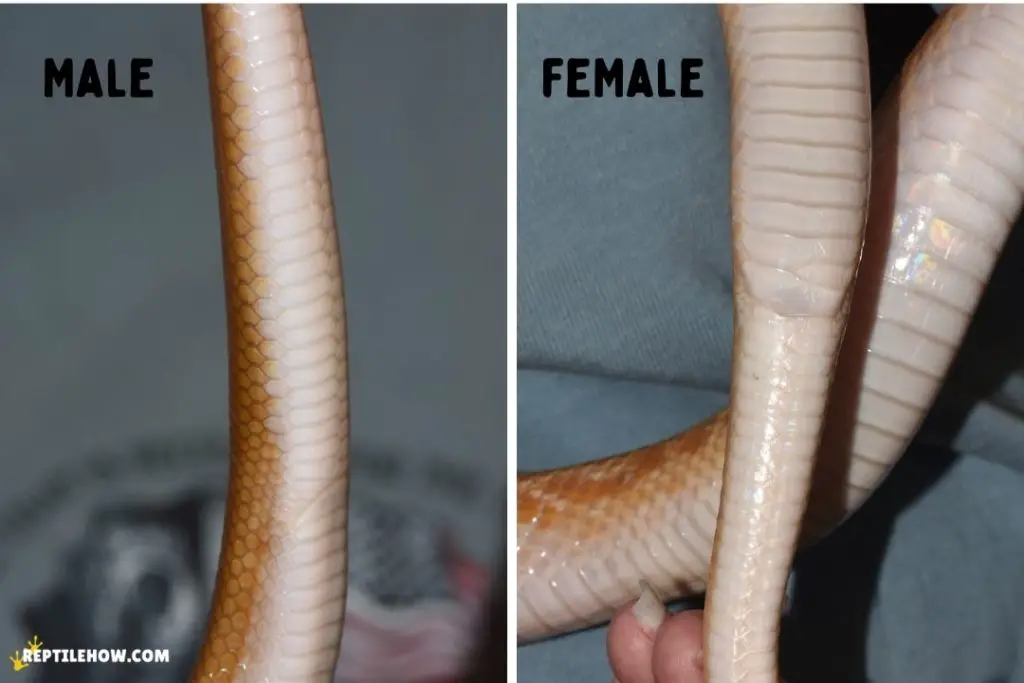
Sexing is a way of determining the sex of your pet. To identify the male and the female animals you have in your home, you’ll have to do sexing. For the snakes, sexing can be challenging if you don’t have prior knowledge about the male and female features.
Male and female African house snakes have distinct features that can help you identify them quite easily. This identification comes in handy when separating your males and females snakes to control the breeding rate.
Male African house snakes have relatively longer tails compared to females. The male tails also remain wide for more of their length.
This is because of the retracted hemipenes inside the tail. Female tails, on the other hand, will often widen just posterior to the vent.
On the other hand, female African house snakes can double the male size; they can grow up to about four feet long, about a hundred and twenty centimeters.
It’s important to note that this is a relative tail length. A larger female will have a longer tail than a small male snake.
For the adult African house snakes, sexing them is pretty easy. Adult male African house snakes rarely exceed two feet.
Step 3: The Mating
For the sub-adults, you will have to observe their tail shape to be able to separate them. The tail shape for the male and female vary slightly, and you can use this knowledge to distinguish them when separating.
Since they are from the tropical and subtropical climatic areas in Africa, they don’t need cycle stimulation to breed.
With the right enclosure setup, They will copulate and breed on their own.
Step 4: Eggs Incubation
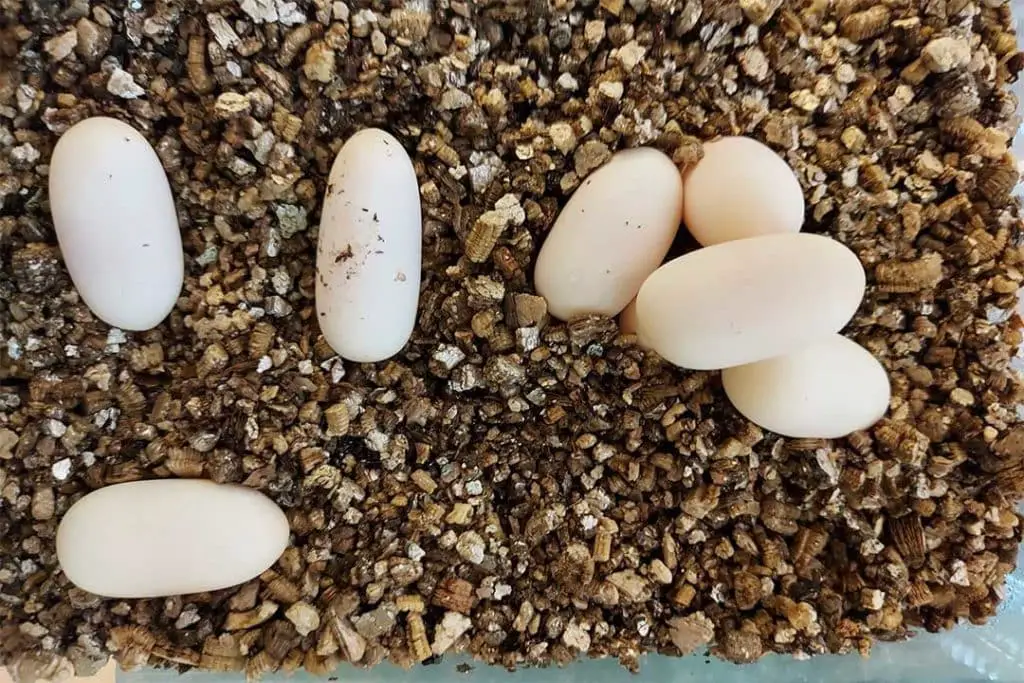
House snakes lay very adhesive eggs in clutches that are firmly stuck together. Do not attempt to separate them even if some infertile eggs are attached to the clutch, as this might damage the eggs.
Like any other colubrid eggs, the house snake’s eggs can also be incubated. You can use a dampened vermiculite and follow the following steps;
- Wet it and squeeze all the water out.
- Place the eggs on the surface of the vermiculite in a small deli cup or a similar-sized container.
- Place the cup in a plastic sweater box with a few centimeters of water standing at the bottom.
- Check the eggs a number of times a week, open them if they’re sweating, or give them a spray of water if they’re dying out.
In the absence of any catastrophe, good eggs will hatch well.
You can also build an incubator for the eggs and incubate them at temperatures between 75 to 85 degrees Farenheit.
Reptile Eggs 25L Incubator
- Temperature can be adjusted from 36 to 140°F), providing a constant temperature incubation environment.
- Having a roomy 25L chamber volume and with a built-in handle, the incubator is easy to move around.

High temperatures above that may reduce the hatch rate of the eggs and increase developmental deformities. Low temperatures below this will also reduce the hatch rate and increase the developmental malformations of the hatchlings.
Step 5: Hatchlings Care
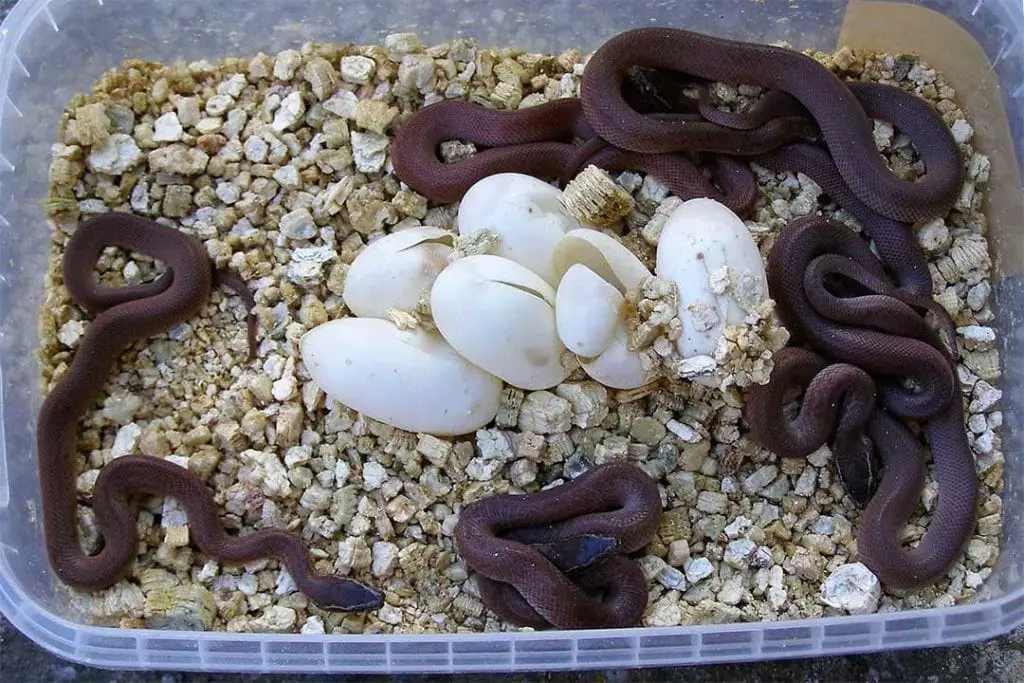
House snakes produce hatchlings that vary in size; they usually are between 6 to 10 inches in length. Hatchlings shade within a week and will then be ready for their first meal. For these small ones, they should accept a meal or two per week.
Small containers can make hatchling care easier. Nevertheless, this may pose some danger because there have been several cases where the tiny house snakes have eaten their siblings.
A small house snake will eat their siblings when they are hungry or during meal times because of how overzealous they tend to be when feeding.
If you want to care for all your baby snakes to maturity, it will be better to separate your hatchlings.
You can do this by partitioning their cage so that they don’t come close together.
It is also dangerous to throw a handful of pinkies into the cage of the hatchlings during feeding time. House snakes are aggressive when it comes to food, and this includes even the tiny hatchlings.
Their aggressiveness might make them gorge on the pinkies and choke to death.
For the hatchlings that refuse to feed at first, here are simple adjustments you can do to make them eat;
- Feed-in a deli cup or a similar-sized container at night
- Try giving them a live pinkie
- Try braining a dead pinkie
- Try removing all other snakes from the cage.
Conclusion
When it comes to breeding them, feeding them, or taking care of their hatchlings, brown house snakes will give you a very easy time altogether.
Let me know in the comments below if you have anything to add, or any questions whatsoever!
